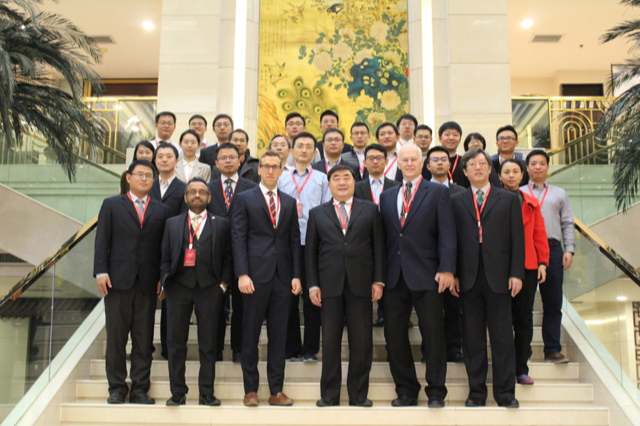
During November 11- 15, 2019, Mr. Eric Stahl, Dr. Sunil Weerakkody, and Mr. Glenn Kelly from the United States Nuclear Regulatory Commission (U.S. NRC) International Regulatory Development Partnership (IRDP) program participated in the “China-US Workshop on Risk-Informed Nuclear Safety”. The workshop was hosted by the Chinese Nuclear Regulator, the National Nuclear Safety Administration (NNSA), in Beijing, China
Dr. Sunil Weerakkody, US NRC, and Mr. Glenn Kelly, AdSTM, presented on topics that included probabilistic risk assessments (PRAs); and risk-informed regulations, guidance, and inspections in the U.S. Similarly, the NNSA provided information on risk-informed activities including regulations that are currently in place and are in the process of promulgating in China. The U.S. delegation was particularly interested in the information provided by the NNSA regarding their experience with operating AP-1000 nuclear power plants (NPPs) and how they are incorporating risk-informed thinking for passive NPPs like the AP-1000.
The workshop included presentations by the Chinese regulator on: risk-informed technology, development of performance indicators in China, the status of risk-informed technology in China, Probabilistic Safety Assessment (PSA) scope and quality, risk-informed technology applications, the Significance Determination process, and future plans for risk-informed applications. During the workshop, Mr. Kelly, described: what is a PRA; how risk-informed regulations are developed and applied; application of configuration risk management at NPPs implementation of Performance Indicators; and the tools used by the nuclear industry to monitor risk at NPPs. Dr. Weerakkody discussed: how risk-informed decision-making was developed and used by the US NRC; the Reactor Oversight Process; and how the US NRC monitors risk at NPPs.
Of particular interest were discussions on the insights and challenges of regulating passive plants, evaluating the expected reliability of passive equipment and newly designed equipment, and human error rates including errors of commission
In addition, participants shared their thoughts on the reliability of natural circulation in off-normal conditions.
